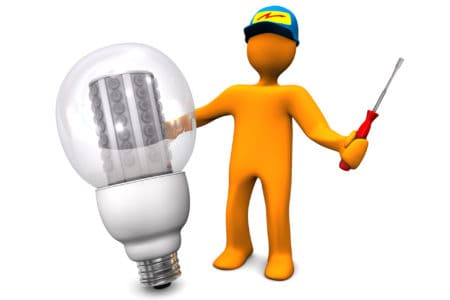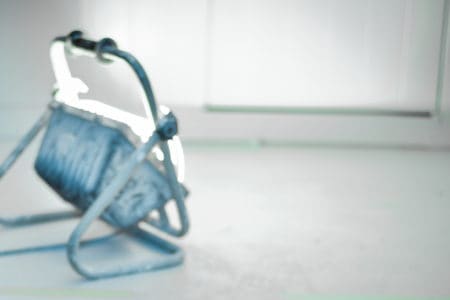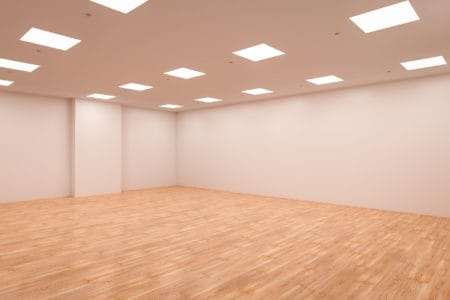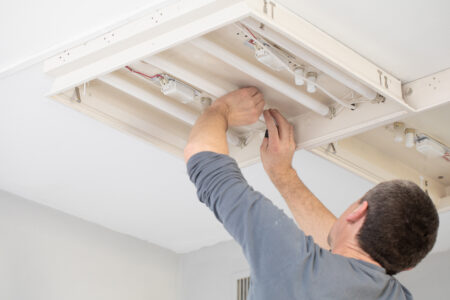Halogen light bulbs are a special type of the incandescent bulb that contains a small amount of halogen gas. They’re similar to standard incandescent bulbs in size and shape. But they last longer and also use less electricity. Read on to find out more!
What Is a Halogen Light Bulb and How Does It Work?
A halogen light bulb is a type of incandescent light bulb that uses a tungsten filament to produce light.
In addition to using an electric current to heat the filament, it uses halogen gas to help it stay hot. Why? The halogen gas helps the filament last longer and produces more light than traditional incandescent bulbs.
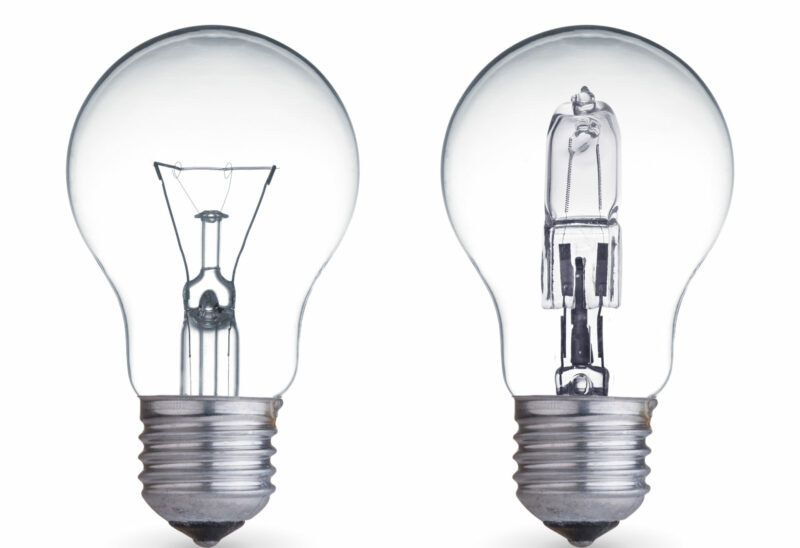
Furthermore, the halogen gas contains a small amount of iodine or bromine—which gives off heat when it’s burned in the air. As a result, the bulb burns hotter and brighter than standard incandescent bulbs.
This heat then generates an electric current through a filament inside the bulb, which then glows brightly enough for use as an illumination source. This is why halogen light bulbs produce more light than regular incandescent bulbs.
Who Invented Halogen Light Bulbs?
Let’s go back to the origin of these bulbs. Halogen light bulbs were first invented in the late 1950s by General Electric.
They were an improvement over their predecessors: conventional incandescent bulbs, which didn’t use any special gases inside them. Instead, they just relied on electricity passing through a metal wire filament at high temperatures for several hours at a time.
This was done to make them glow bright enough for home or office needs—which meant that they would burn out relatively quickly!
What Are Halogen Light Bulbs Used For?
You can see Halogen bulbs used in a wide range of commercial and residential applications. For example, you may find these light bulbs in vehicle headlights, work lights, and under-cabinet illumination!
You can also find them in directed lighting. A prime illustration of such would be floodlights, which are used to light up outdoor sports grounds.
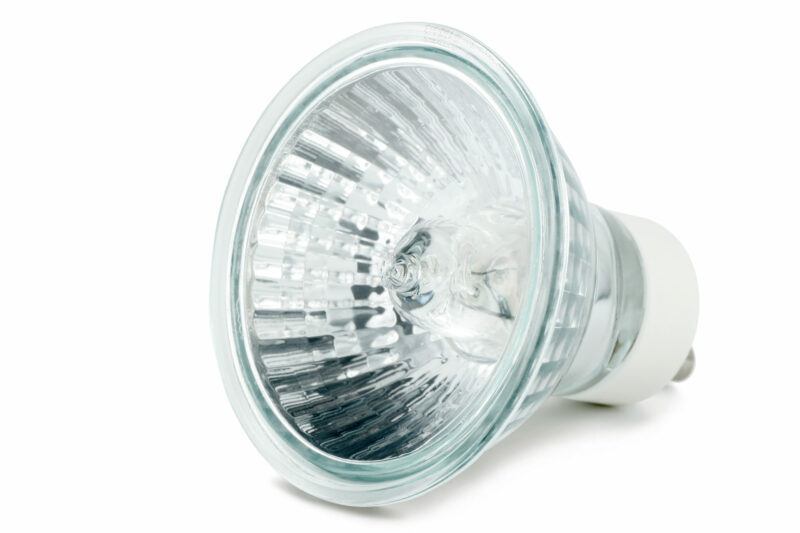
Another example would be spotlights, which cast a strong light beam onto a performing area. Both of these direct illumination systems usually employ MR and PAR bulbs, which are halogen reflectors.
All in all, halogen lights may be used in a variety of settings. However, one potential drawback is the heat they produce, especially in regions where HVAC expenditures are an issue.
Halogen vs Incandescent Bulbs
While many people believe that halogen and incandescent bulbs are interchangeable, this is not the case. Halogen lighting is simply an improved version of incandescent lighting. That said, let’s look at the difference between the two.
Efficiency
Halogen light bulbs are more efficient than normal light bulbs. In fact, they’re around 25% more efficient than standard incandescent bulbs and can use less electricity to produce the same amount of light.
Longevity
Halogen lights have also been found to last up to 2–3 times longer than your average bulb. This means you don’t have to worry about replacing them as often or paying for the energy it takes to power them on.
Cost
However, despite all these benefits, halogen bulbs are still more expensive than their non-halogen counterparts. Even though they use less power and last longer, they still cost more per hour of use.
However, if you need something that lasts longer and is slightly more efficient than an incandescent bulb, then a halogen could be worth your money in the end!
Halogen vs CFL Bulbs
Now that you understand the differences between halogen and incandescent bulbs, it’s time to look into fluorescent lighting. Let’s begin by comparing halogen and CFL lighting!
Cost
The first difference between halogen and CFL bulbs is the cost. Halogen light bulbs are more expensive than CFLs.
This is due to CFLs being more energy efficient. For example, replacing just one halogen bulb with a CFL might save you $5.62 each year on average.
Lifespan
Halogen bulbs have a shorter life span than CFLs, which means you’ll need to replace them more often. The average lifespan is about 2,000 hours for halogens, while CFLs typically last ten times longer at around 20,000 hours.
Heat
Halogens generate more heat than their CFL counterparts, which can be both good and bad depending on where they’re used. Good for keeping your house warm in the winter, but not so good for keeping things cool in the summer (such as when installing them in decorative lamps).
If your home doesn’t get very cold during winter months or it’s already heated well enough by other sources (such as radiators), then there’s no need for extra warmth from halogen lights. As a result, purchasing them would simply be an unnecessary expense!
Halogen vs LED Bulbs
Halogen and LED lights are two of the most popular types of light bulbs on the market today. However, they have different benefits and drawbacks that you should be aware of before deciding to purchase one or the other.
Efficiency
LED lights are more energy efficient than halogen bulbs, which means they’ll save you money on your electricity bill. They also last longer and don’t need to be replaced as often.
Heat
LEDs are more durable than halogen bulbs and don’t get as hot when they’re on. Halogen bulbs have a glass covering that gets extremely hot when you turn them on—so much so that it can burn your hand if you touch it!
In contrast, LEDs don’t get nearly as hot. This is good news if you have kids or pets around the house because they’re less likely to hurt themselves by touching an LED bulb.
Longevity
While halogens are still popular, they don’t compare to LEDs when it comes to longevity and safety. LEDs last up to 25 times longer than halogens, which means you won’t have to replace them as often.
Plus, since LED lights don’t contain mercury as some older bulbs do, they’re safer for you and the environment
Installation
LEDs are also smaller in size, lighter in weight, and easier to install than other types of lighting technology. They’re generally brighter than halogen bulbs too!

